Buffing and Polishing Services Information
Buffing and polishing services perform smoothing operations that change a metal's surface appearance. These operations can be for aesthetic and/or functional purposes. It is important to understand the difference between buffing and polishing. Polishing uses coarse to medium abrasives to remove moderate amounts of metal from the surface. The process removes scratches and minor surface imperfections which are too deep for buffing to fix. The final metal piece will have a brushed look without any reflections. Successful polishing removes just enough material to make the surface even. Buffing is used to remove small surface irregularities. The process is done in stages from course to fine with the intent of making the metal surface almost perfectly smooth by removing very small amounts of metal. The buffing compound grits are very fine and may not be easily distinguished by touch.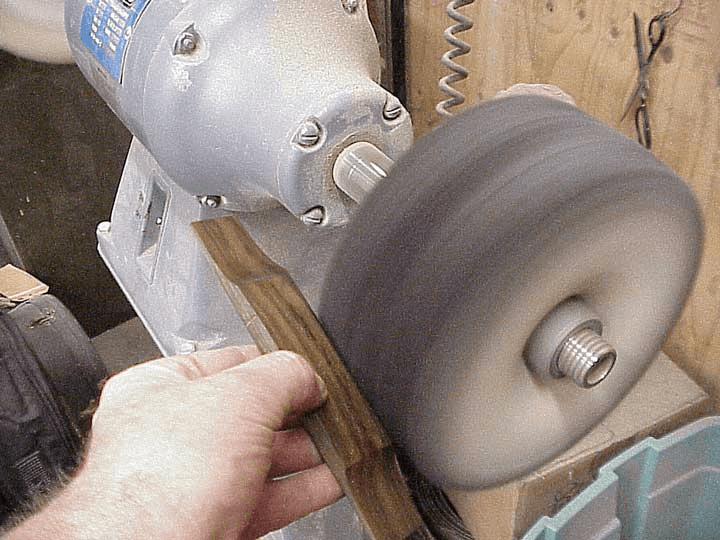
Polishing
Polishing can include a variety of processes such as electropolishing, electrolytic machining or electrochemical machining (ECM), lapping, honing, fine grinding or super-finishing. In abrasive polishing processes, very fine fixed, slurry, or loose abrasive particles are utilized. Often a series of progressively finer abrasives are required to remove scratches and generate the required polished surface finish. Polishing slurries or lapping compounds consist of fine abrasive particles dispersed in a carrier liquid or media. Fixed polishing abrasives can include honing or polishing stones, coated abrasive belts or discs, lapping films, and nonwoven products. Polishing is usually done for aesthetic improvement, but is also helps prevent corrosion, remove rust, create a reflective surface, or buff out small imperfections.
Tips and tricks for polishing. Video credit: ARCpdx / CC BY-SA 4.0
Buffing
Buffing and polishing services perform operations that use a buff, buffing pad, or felt bob loaded with polishing or buffing compound to refine the surface. It is typically a finishing stage which adds extremely high shine to the material. There are two different methods of buffing, cut-motion and color-motion. Cut-motion is designed to create a smooth, semi-bright, uniform finish, and is achieved by moving the piece in the direction opposite the buffing wheel's motion, using medium-to-hard pressure. Color-motion is done by moving the piece in the direction the wheel is turning. By using light-to-medium pressure an ultra-bright and shiny finish can be achieved.
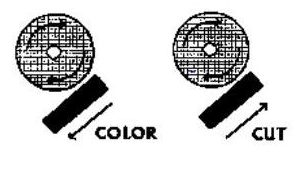
Two types of buffing. Image credit: Casswell Plating
Specifications
In applications with functional requirements such as mirrors, lenses, or polished shafts, a characteristic surface roughness or surface finish parameters (roughness average, bearing area ratio, etc.) are typically specified. For decorative applications, specification of a mill finish or appearance (satin, brushed, etc.) might be sufficient.
Capabilities
Buffing and polishing services perform processes that are part of the general surface finishing or surface refinement area. Common processes include
Abrasive flow machining (AFM) - In the abrasive flow machining (AFM) process, a mixture of abrasive grain in a high-viscosity carrier media is passed through the ID or internal openings of the part. AFM processes are used to deburr, polish and generate controlled radius geometry in components. Orbital AFM processes are used for external finishing and geometry control. MicroAFM processes are used to radius, deburr, and improve the surface finish of orifices in nozzles, fuel injectors, spray tips, or other parts with very small or micro-sized holes.
Buffing and polishing - Buffing, polishing, and other belting processes are smoothing operations that change a metal's surface appearance.
Electropolishing - Electropolishing uses a combination of rectified current and a blended chemical electrolyte bath to remove flaws from the surface of a metal part. The process removes metal rather than moving it or wiping it across the surface. It can be used in difficult to reach places and it relieves stress on the surface. The finished surface is bright and clean.
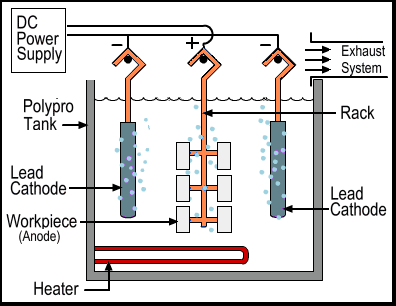
Electropolishing process. Image credit: Northeast laser
Chemical finishing - Chemical finishing and conversion processes apply black oxide or phosphate coatings to improve surface adhesion. Supplier has chemically accelerated or isotropic superfinishing machines. ISF machines are designed to utilize chemicals to accelerate the material removal or finishing process. Isotropic superfinishing and electrochemical grinding are examples of chemically accelerated processes.
Honing- Honing and super-finishing are precision finishing processes that generate very flat, smooth, or low Ra surface finishes.
Mass finishing - Mass finishing processes are used for bulk processing. Tumbler, disc, drum, or vibratory finishing equipment is used with abrasive media and compounds. The movement of the media and compounds against the parts impart the desired surface finish.
What is mass finishing. Video credit: SPALECK100 / CC BY-SA 4.0
Mirror finishing - Supplier has the capability to provide surface with a mirror finish. A mirror finish is when the peaks and valleys on the material's surface are so small and close together that they reflect light, making the surface appear smooth.
Peening - In the shot peening process, smooth glass beads or metal shot are blasted at a surface. They impart compressive residual surface stress, which removes residual tensile surface stresses. Shot peening improves fatigue strength or performance under a high number of load cycles. Shafts or other components exposed to high number of load cycles often require parts or materials with higher fatigue strength.
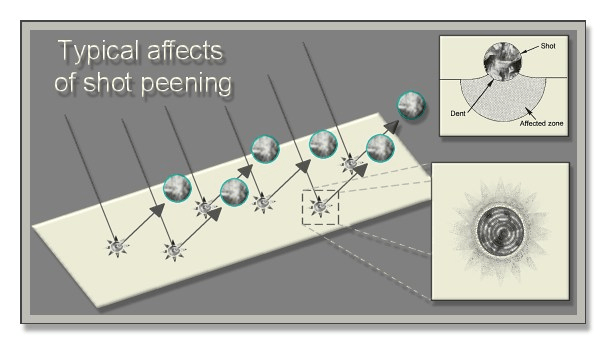
Shot preening. Image credit: Abrasive Finishing
Sanding and grinding- Sanding and grinding processes are used for rough-to-fine surface finishing. Abrasive discs, belts or grinding wheels are used to remove surface irregularities, clean, and/or produce the desired surface finish.
Materials
Buffing and polishing services vary in terms of material processing capabilities and certification or quality requirements. Some companies process parts made from aluminum, copper, nickel, iron, cast iron, steel, stainless steel, titanium, and precious metals. Others process ceramics, metallized ceramics, composites, carbides, glass, plastics, and polymers.
The material used as the abrasive must be carefully selected based on the type of material being polished or buffed. If the abrasive is too rough it will create deep grooves that will damage or destroy the surface.
Below is a guide to help determine which wheels and compounds are best used to polish different materials.
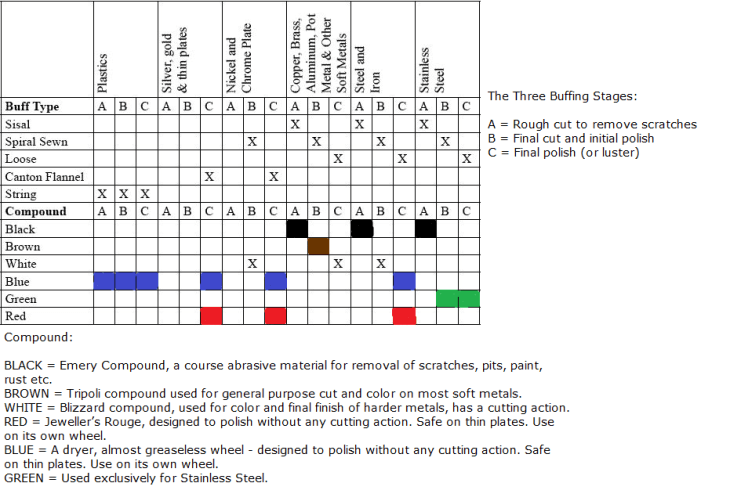
Image cedit: Caswell Plating
Standards
Many buffing and polishing services meet International Standards Organization (ISO) requirements or automotive, aerospace, military, or OEM specifications. Certification and quality requirements for finishing and surface treatment services include ISO 9001:2000, ISO TS16949, AS 9100, and QS 9000. AS 9100 is a set of quality guidelines and requirements published by the Society of Automotive Engineers (SAE) in cooperation with major aerospace manufacturers. QS 9000 is a quality standard for suppliers of Daimler Chrysler Corporation, Ford Motor Company, and General Motors Corporation. Companies that meet U.S. military specifications (MIL-SPEC) and comply with OEM-specific requirements also provide finishing and treatment services.
Resources
An Introduction to Buffing and Polishing
Image credit:
frets.com
- Abrasive Flow Machining (AFM)
- Aerospace
- Aluminum
- Architectural / Construction
- Automotive
- Buffing / Polishing
- Carbide
- Castings / Cast Metal
- Cement / Concrete
- Ceramic
- Chemical / Material Processing
- Commercial / Professional
- Copper / Copper Alloys
- Corrosion Inhibitors
- East Asia / Pacific Only
- Electronics
- Electropolishing
- Energy / Utilities
- Food & Beverage
- Glass
- Government
- Honing / Superfinishing
- Inspection / Monitoring
- Iron / Cast Iron
- Machine Tools
- Maintenance / MRO
- Marine
- Mass Finishing (Tumbling / Vibratory)
- Medical / Healthcare
- Metal
- Midwest US Only
- Military Specification
- Mirror Finishing
- New / OEM Parts
- Nickel / Nickel Alloys
- North America
- Northeast US Only
- Northwest US Only
- OEM / Industrial
- Oil & Gas
- On-site / Field Work
- Peening
- Pipes / Piping
- Plastic
- Precious Metals
- Process Equipment
- Process Selection / Design Assistance
- Refinishing
- Research & Development
- Sanding / Grinding
- Security / Safety
- Southern US Only
- Southwest US Only
- Material / Substrate Capabilities: Specialty / Other
- Stainless Steel
- Steel / Metal Mills
- Steel / Steel Alloys
- Titanium
- United States Only
- Vessels (Tanks / Reactors)
